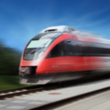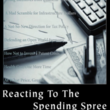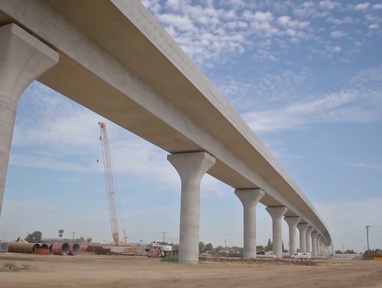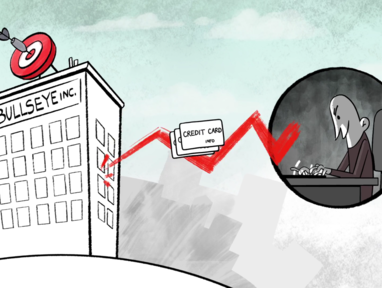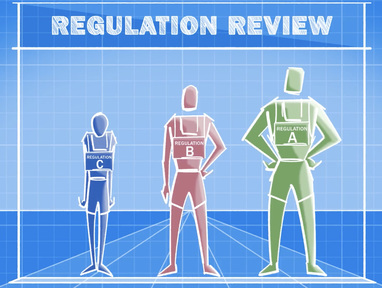Infrastructure
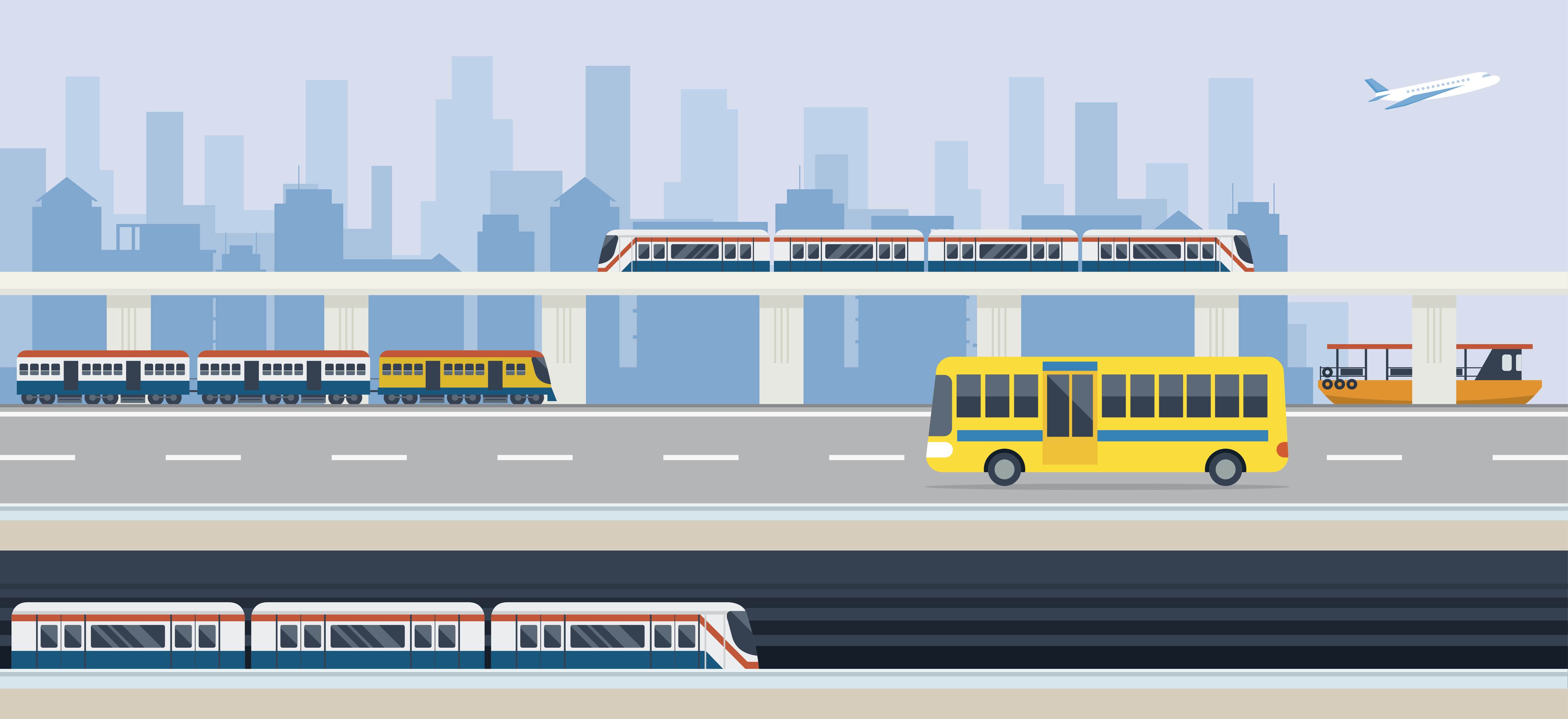 With COVID-19 wreaking havoc on the economy, some in Congress are proposing a large increase in infrastructure spending. Supporters argue there is no better time to make these investments. They claim that increased spending will boost the economy while ensuring future generations will benefit from improved transportation, power, and communication systems. Plus, with interest rates near all-time lows, the federal government could pay for improvements with low borrowing costs.
With COVID-19 wreaking havoc on the economy, some in Congress are proposing a large increase in infrastructure spending. Supporters argue there is no better time to make these investments. They claim that increased spending will boost the economy while ensuring future generations will benefit from improved transportation, power, and communication systems. Plus, with interest rates near all-time lows, the federal government could pay for improvements with low borrowing costs.
But will increased federal spending on infrastructure deliver on these promises, or are there reasons to be skeptical?
What is the state of the nation’s infrastructure?
From cracked bridges and dams to congested roadways, the list of potential infrastructure projects seems endless. But is the state of the nation’s infrastructure really that dire?
In the last presidential cycle, both major candidates claimed the problem demanded a significant increase in infrastructure spending to remain competitive in the twenty-first century. They pointed to studies by the American Society of Civil Engineers (ASCE) ,who claim that the US infrastructure is in need of trillions of dollars of additional investment. In a debate on the merits of infrastructure spending, economist Russ Roberts reminds listeners that the ASCE has an interest in increasing infrastructure spending: “Asking them for what we should spend money on for infrastructure is a little bit like asking schoolteachers whether we should spend more money on education. The answer is always yes.”
Somewhat contrary to the dire warnings of the ASCE, economist Paul Gregory notes that the nation’s infrastructure—while certainly in need of improvements—is actually ranked higher than those of many other developing countries, including Switzerland, Canada, Luxembourg, Japan, the United Kingdom, France, Korea, and Sweden.
But that doesn’t mean that there isn’t work to do. One does not need to look far to find issues with the nation’s roads, bridges, dams, or utilities. We can see the consequences of poor infrastructure across the country. Economist Lee Ohanian explains how a lack of adequate water infrastructure in California means state lawmakers must institute draconian water restrictions whenever the state faces dry conditions. Meanwhile, as the video below highlights, our nation’s utilities and other critical infrastructure are increasingly vulnerable to cybersecurity threats:
What’s the problem?
Why is the nation’s infrastructure not in better shape? The problem is partially a consequence of lack of investment. Lee Ohanian points to decades of underinvestment in dams and pipelines to explain why California seems to be in a perpetual water crisis. In fact, California hasn’t broken ground on a major water project since the 1970s. Similar funding shortfalls for important infrastructure projects can be seen across the country.
But it isn’t as if the money isn’t being spent on infrastructure projects. Russ Roberts explains that, even after adjusting for inflation, spending on transportation infrastructure has risen considerably since the 1960s.
The bigger question is whether the money is being spent wisely. California’s broken roads and failing water systems, for example, were overlooked while the state was investing billions of dollars on its ill-fated high-speed rail project. As Ohanian argues, the California high-speed rail project produced “billions of dollars in waste that could have been used productively elsewhere.” It is hard to express how poorly the project went. In the video below, economist Michael Boskin highlights the waste and mismanagement that derailed the high-speed rail project:
Why do states and the federal government have such a difficult time choosing worthwhile infrastructure projects? One problem is who pays. Many large projects are financed through a combination of federal and state funds. Since state governments don’t bear the full cost of these projects, they have less incentive to pursue projects where the benefits clearly exceed the costs. Boskin explains how this happens:
Most federal infrastructure spending is done by sending funds to state and local governments. For highway programs, the ratio is usually 80% federal, 20% state and local. But that means every local district has an incentive to press the federal authorities to fund projects with poor national returns. We all remember Alaska’s infamous “bridge to nowhere.”
In other words, if a local government is putting up only 20% of the funds, it needs the benefits to its own citizens to be only 21% of the total national cost. Yet every state and every locality has potential infrastructure needs that it would like the rest of the country to pay for. That leads to the misallocation of federal funds and infrastructure projects that benefit the few at the cost of the many.
Another problem is politics. Politicians are eager to invest taxpayer dollars into high-profile projects that will garner attention. After all, a state-of-the-art train connecting Los Angeles to San Francisco is more eye-catching than investments in repairing water pipelines or repaving highways. The result is that important maintenance work is often overlooked. In 2009, Congress passed the American Recovery and Reinvestment Act (ARRA), which contained up to $100 billion dollars in infrastructure spending. Little of the funds, however, went to maintenance. James Huffman explained at the time, “Less than half of the $100 billion is destined for infrastructure of the type included in the deficit estimates, and a significant share of that will go for new facilities rather than maintaining existing infrastructure.”
Finally, even when politicians choose the right projects there is no guarantee the projects will be completed. Federal and state regulations often impede important infrastructure projects. In this 2016 interview, law professor Richard Epstein explains how stringent environmental and labor regulations slow and sometimes stop important infrastructure projects:
Government hiring and buying policies can also add significant costs to new projects. For example, in 2011 the Obama administration proposed the American Jobs Act (AJA), which included funding for new infrastructure projects. The administration’s proposal included a “buy American” provision. These provisions, often included in federal spending legislation, require government-financed projects to use products that are manufactured in the United States, even when those products are more expensive than foreign options. Likewise, the act included prevailing-wage requirements, which further increase the cost of public projects. Epstein explains the history and consequences of prevailing-wage laws:
One of the lasting shames of American law is the Davis-Bacon Act, passed at the height of the depression in 1931. It guaranteed the payment of “prevailing,” i.e., union wages to workers on government jobs. For those with short memories, the 1931 statute was introduced to keep “itinerant colored workers” from the South from underbidding union workers in the North.
Today, the racial element is thankfully gone, but the economic madness is continued in the AJA, which extends the old Davis-Bacon wage restriction to these new government projects. A sound government tries to pay less for more, not more for less. To be sure, this provision will put more money in the pockets of some working Americans. But it will also take money out of the pockets of others. How this new protectionist measure creates jobs is left unexplained.
In short, public spending on infrastructure is often wasted on unnecessary projects, lost to burdensome regulations, or spent in inefficient ways. The consequence is the nation’s much-maligned infrastructure.
Is investing in infrastructure good for the economy?
Even if the spending is inefficient, increasing infrastructure spending, perhaps during an economic recession, can be justified as “economic stimulus.” Long before our current economic crisis, Michael Boskin explained this logic: “Infrastructure spending will lift the U.S. economy out of the doldrums, spurring growth and raising employment and incomes.” But in practice, Boskin notes, infrastructure spending isn’t quite the stimulant its proponents hope:
Japan tried infrastructure-heavy serial fiscal stimuli for decades and is trying again under Prime Minister Shinzo Abe. Yes, Japan now has many new bridges, roads, and paved drainage ditches, but the spending has done little to improve Japan’s meager growth rate. What politicians in Japan or the U.S. don’t mention is that government infrastructure projects tend to use massive, modern construction equipment, so they aren’t labor intensive.
In 2011, economist John Taylor and John Cogan took a close look at the 2009 stimulus efforts, which included federal infrastructure grants to states and local governments. They found little economic effects from these efforts. With the exception of increased health care expenditures, states didn’t use the federal dollars to raise spending; instead, states used the grants to reduce borrowing. Their findings were consistent with research from the 1970s that examined how states responded to federal grants. Taylor and Cogan concluded: “The lesson is to beware of politicians proposing public works and other government purchases as a means to stimulate the economy. They did not work then and they are not working now.”
Further, even if the increased federal spending did increase infrastructure spending there is no guarantee that the money will be spent quickly enough to stimulate the economy during the depths of a recession. As we noted above, there are significant regulatory hurdles that must be overcome before a project begins. This means that there a few public projects that are “shovel ready.” Looking back at the 2009 spending efforts, Boskin observed:
Politicians sell infrastructure programs by saying they will lead to an immediate economic boost. But given the scope and duration of these projects, this is rarely true. After the 2008 subprime-mortgage meltdown, President Obama signed a $828 billion “stimulus” program. But the 7% devoted to infrastructure did not go to the areas with the highest unemployment or worst housing bust. Mr. Obama eventually had to joke in June 2013 that “Shovel-ready was not as, uh, shovel-ready as we expected.”
Conclusion
There are many shortcomings to our current system for upgrading and investing in infrastructure. Needed improvements and maintenance efforts are neglected. Meanwhile, policy makers pursue expensive projects that may boost their election prospects but yield little benefit to society. Nevertheless, the problems with infrastructure spending do not mean that policy makers should give up. From water system and highways to other parts of the nation’s critical infrastructure, the nation is in need of new public investments. But the shortcomings do suggest that we should be careful about committing federal dollars to expensive new projects that sound good or to funneling billions of dollars to state governments that may have no intention of increasing public investments within their state. Instead, as Michael Boskin argues, the federal government should only invest in “public infrastructure projects that pass rigorous national cost-benefit tests.”
As for stimulating the economy, infrastructure projects don’t appear to be the economic cure claimed by their proponents. Fortunately, there are other ways to improve the economy. For example, in our Policy Insights edition on regulation, we explained how fixing the way we regulate would improve the economy and increase economic opportunities for all. Reforming how we regulate would not only remove obstacles for private businesses but also reduce the cost and time to complete needed infrastructure projects.
Citations and Further Reading
In Reacting to the Spending Spree, Hoover Institution scholars examine the Bush and Obama administrations’ spending policies during and after the Great Recession. In his chapter, James Huffman explains why the Obama administration infrastructure spending could not deliver the promised results.
In Managing the Cyber Security Threat, Hoover Institution senior fellow Abraham Sofaer explains how the nation’s critical infrastructure is increasingly vulnerable to cybersecurity threats.





